

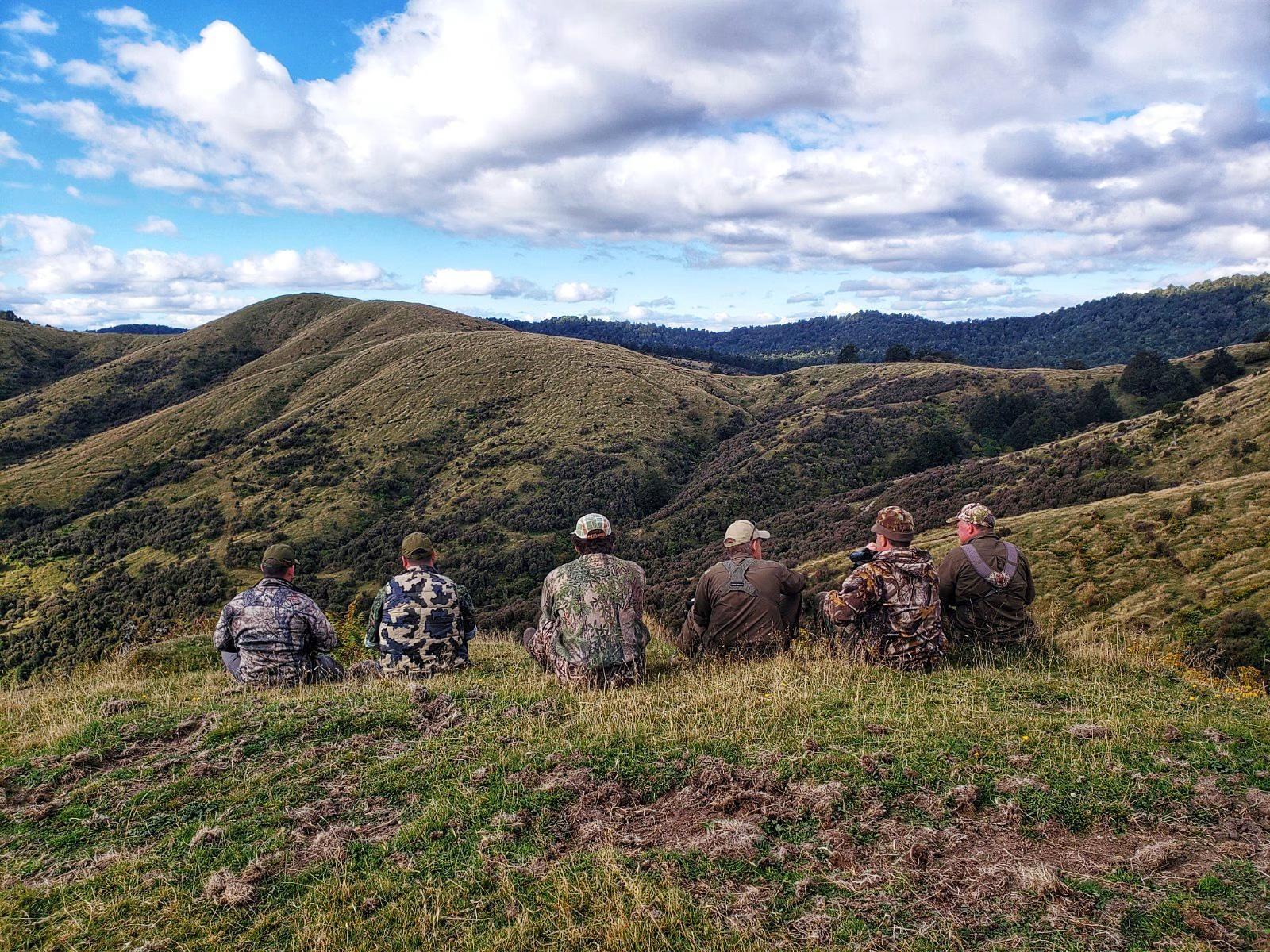
Hunting Experiences
18 July 2025
From powerful Red Stags to cunning Sika Deer, New Zealand’s diverse game species make it a bucket list destination for world-class trophy hunting adventures.
There’s a lot to consider – so let’s look at some important things to think about when planning your next hunt in our stunning country so you can get the most from your visit.
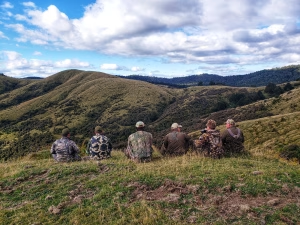
There is an extraordinary range of game species to hunt here, making our country popular with international hunters. Here are some that you’re likely to encounter in the North Island:
Red Stags are the most sought-after game animal in New Zealand. Their antlers vary dramatically in size and character, from wide and symmetrical to more rugged, heavy-trunked configurations. If you’re planning a hunt, spending time looking at photos and footage online can help you visualise what your ideal trophy might look like before you even arrive.
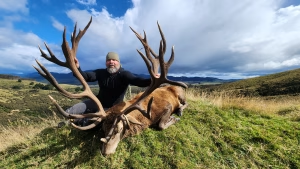
Sika Deer are smaller and famously elusive, prized for their cunning and wariness – and their pelts are equally admired, with their bright chestnut colouring, creamy white bellies and spots along the back. Claiming a Sika is often a unique point of pride for an astute hunter.
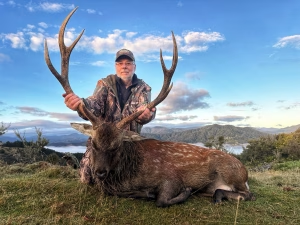
Fallow Deer are elegant and distinctive, with palmated antlers that make for impressive mounts. The most common in New Zealand is the brown-black melanistic variety, however you can also expect to see the common (light red-brown with white spots), menil (paler), and striking leucistic (white) varieties.
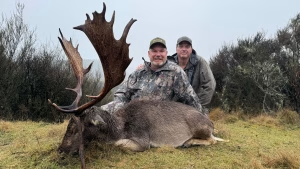
Rusa Deer are an exceedingly wary species with a tropical heritage and distinctive three-point antlers. Not a common sight, and an elusive trophy.
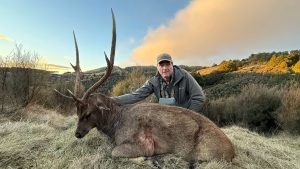
Finally, Sambar are among the most imposing of the deer species, weighing up to 650 lbs and bearing massive, rugged antlers that consistently rank among the best trophies. Despite their size, they’re exceptionally hard to spot due to their dark, shaggy coats and nocturnal behaviour.

These species make the New Zealand “big five” of deer, and a challenging and rewarding trophy hunt for keen hunters in the North Island.
While Red and Fallow appear throughout the country, the steep, mixed rock and scrub slopes of the South Island’s high country make it idea for sheep and goat hunting.
Arapawa rams are a heritage breed from the Marlborough Sounds, with massive, tightly curling horns that can exceed 30 inches. Rams tend to favour steep coastal bush and rugged cliff faces, and are available year-round.
The South Island is also considered a high point for the tenacious and agile Tahr. This Himalayan mountain goat is particularly popular between May and August, when the bull’s thick, reddish-brown winter coat is fullest.
Equally rewarding to hunt is the Chamois. Both sexes carry distinctive, hook-shaped horns that earn trophy status when exceeding 8.5 inches. While huntable year-round, April to September yields the most impressive dark winter pelts, while the summer months see the coat shifting to fawn tones.
It’s also common in both the North and South Islands to encounter feral goats in the wild, which are often overlooked, but have considerable ranges in colours and are a great trophy for young hunters.
Each species brings its own challenge, so narrowing in on your options before arriving will give you a better appreciation for what’s out there and help you recognise a worthy trophy when the moment arrives.
Absolutely you can, however you’ll need a New Zealand visitor firearms licence, and that must be arranged in advance. This process requires a RealMe identity (a verified identity service from the NZ Government), so it’s important to start early to avoid delays. Your outfitter should be able to help you through this process.
If you do choose to bring your own firearm, then we strongly recommend that you invest some time on the range before your trip so that you’re confident in both your firearm and ammunition, and that you bring extra ammo to re-sight your rifle on arrival if needed.
Quality outfitters can also provide you with complimentary firearms in a range of calibres, and this is the case at Poronui. This is a popular option with those who want to tour the country before or after their hunt. You will have the chance to get familiar with the rifle on the range, before heading into the field.
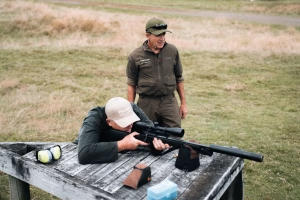
We have a wild and varied country, so there are options available to cater to almost all hunters, irrespective of physical capability. From extremely mountainous terrain to rolling hills, there’s something for everyone, and you can challenge yourself as much as you like.

The Poronui Estate is rolling hill country. A reasonable level of fitness and comfort walking on undulating terrain will open up a wider range of opportunities and make it easier to enjoy the full experience. Good general fitness, with the ability to walk up and down as well as sidling, will go a long way. However, we also cater to those with limited mobility options, and will do what we can to ensure your experience is the best possible.
For a spot-and-stalk hunting experience, the priority items are boots and optics.
We recommend that you bring well-fitting boots that provide good ankle support and have a good edge to the sole. Any boots used for hiking should suit. And make sure they’re worn in, because blisters during your stay are no fun!
Also, ensure that your boots are clean. We have a fragile ecosystem, and hunting and hiking boots are inspected by biosecurity at our international airports to ensure they are visually clean, with no obvious plant or soil material. If not, then expect a $400 fine.
Because spot-and-stalk is the main hunting tactic, good binoculars are critical. We advise 10×42 or similar. You won’t need a spotting scope at Poronui, as your guide will have one.
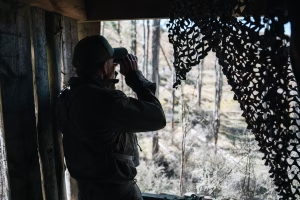
Bring layered clothing in neutral or camouflage. We have a temperate but changeable climate, usually comfortable in the 50-65F (10-18C) range during our hunting season. Days can start frosty, however, so it’s important to have warm layers that you can discard as the day progresses. We also recommend a waterproof, windproof shell, as wet conditions can appear with little warning at any time of the year.
This depends on the kind of hunt. While the recreational hunter might remind themselves to bring snacks, a compass and map, equipment to harvest a trophy or meat, emergency shelter, and so on, you won’t need that with a professional outfitter. Poronui ensures that you’re comfortable and prepared. You need only bring yourself.
One aspect that’s often overlooked by all hunters is how you’ll capture memories of your stay.
Bring a camera, a phone with good photo capabilities, or even a GoPro to record the experience. In the adrenaline and excitement of the hunt, it can be easy to forget to take photos in the moment, so plan ahead. You’ll thank yourself later when you’re reliving the highlights or sharing stories with friends and family back home.
This is one of the most important decisions you’ll make when planning a hunting trip, and there are plenty of options out there to keep in mind.
Before contacting anyone, take a moment to consider what you want out of the trip. Are there specific species you’re looking for? Would you like a non-hunting partner to join, and what accommodation, on-site, and off-site activities are there for them? Do you have specific mobility or access requirements that need to be taken into account? Price is often a factor, but keep in mind that price lists don’t reflect the quality of the overall experience, only what’s included on paper. The cheapest option may not deliver the level of guiding, comfort, or professionalism you’re expecting.
Look for outfitters with established reputations and good track records, then speak directly with them. Ask what they do to set you up for success, and if they’ll handle logistics, guides, licenses and accommodation.
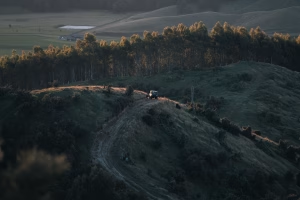
Also, find out if the outfitter runs hunts entirely on their own property – where you step out of your room straight into the field – or if they take you offsite each day. On-property operations maximise your time in the field, and give companions activities to enjoy at your accommodation, rather than spending hours in transit.
If possible, schedule a Zoom or Teams call: Seeing who you’re dealing with helps you get a feel for their professionalism, personality, and whether you’ll get along in the field. A reputable outfitter has a long-term investment in their land, staff, and client relationships – and that means they’re going to deliver an exceptional experience, not just a transaction.
For seasoned hunters and those planning their first trip, preparation is the key to an unforgettable experience. We recommend investing time in planning what you want out of your visit to our beautiful country, including what will make a great hunt, and speaking with outfitters like Poronui who will handle all the fine details so you can focus on the thrill of the hunt on your terms.
If you’re ready to start planning your visit, or just want to talk through your options, then get in touch with the team at Poronui. We’re here to answer your questions, tailor the experience to your needs, and help you prepare for the hunt of a lifetime.
Leave your details and we'll give you a call to discuss your vacation and itinerary options.